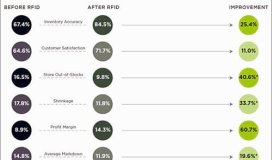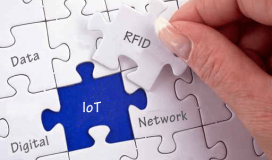Throughout the past year, U.K.-based minerals company Longcliffe Quarries has been employing radio frequency identification technology to manage the movements of vehicles onto and off of its property. By providing a low-frequency (LF) passive RFID tag to each driver, as well as installing an RFID reader at the gate, the company says it can identify every vehicle that arrives, display instructions to the driver, and alert equipment operators at the loading site that the truck is arriving, as well as what product that vehicle requires.
The solution, including hardware and software that manages the collected read data, is provided by Command Alkon, a U.S.-based integrated solutions company for construction materials producers.
Longcliffe supplies high-purity calcium carbonate, limestone powders, granules and aggregates. It sells as many as 100 different products for a variety of applications, including construction materials, animal feed and landscaping, and as an ingredient in plastics, rubber, glass and ceramics.
It's a busy facility, the company reports. Typically, the quarry receives 200 visits daily from tipper trucks and pressurized tankers—and some vehicles might return for six or seven loads within a single day. Some of the vehicles are owned by Longcliffe, while others belong to private contractors.
Since 2011, Longcliffe Quarries has been using Command Alkon software to manage the dispatching of its own vehicles, as well as contractor trucks, management or workforce onsite, and materials distribution, according to Clare Roobottom, Longcliffe's sales coordinator. Approximately 18 months ago, the company began investigating ways in which the software's use could be expanded to automate the movement of traffic into its facility.
The existing process for drivers once their tipper trucks and pressurized tankers arrived onsite, Roobottom says, required having them exit their vehicles in order to collect the necessary paperwork and instructions, then return to the trucks to drive them to the loading spot. When a vehicle arrived at that spot, heavy-equipment operators would speak with the driver to confirm which materials he needed. After his truck was loaded with the appropriate materials, he would then drive it to the scales for weighing, and the resulting weight measurements would be forwarded to the Command Alkon software, after which the vehicle would leave the site.
This process sometimes forced drivers to wait in queues at the entrance. In addition, it could pose a safety hazard since the drivers needed to exit their vehicles in an area where heavy machinery was moving around them.
With the Command Alkon solution, some drivers have been given Global ProxCard II 125 kHz RFID cards, enabling them to proceed to a dedicated, RFID-enabled lane. Each driver's plastic card has an embedded RFID tag encoded with a unique ID number linked to data in the Command Alkon software regarding that individual, his vehicle and the company for which he works.
Upon arriving at the gate, drivers stop beside a kiosk with a built-in Global ProxPoint Plus RFID reader. The driver need not leave his vehicle, but instead can simply hold his tag within a few centimeters of the reader, which captures the tag ID and forwards that data to the software residing on Longcliffe Quarries' server. The software confirms that this particular vehicle is expected onsite that day, as well as the type of load it has arrived to collect. The kiosk's video screen then displays authorization to enter, along with instructions indicating where the vehicle should go to receive its load.
To see more information,you can visit rfidjournal.com


